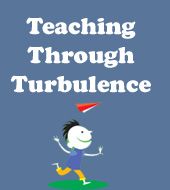Do you feel that Special Education teachers are always asking you to do more things or to remember more information? As a Kindergarten (or even some other primary grades) Teacher, you may have students that need extra help, but you are all they have right now (due to not being identified yet). How do you start incorporating modifications and accommodations for these students in your already busy schedule?
I have taught Kindergarten and I am now a Special Education teacher, so I have been on both sides of it. I want to share some simple things to try in your classroom when you need them, especially for behavior.
First of all... here is a simple fillable form for you as a freebie for when that information is being thrown at you. You will notice that this page does not say Special Education on it at all because of the confidentiality. It also does not have the eligibility area on it, because of confidentiality and honestly.. as long as you know what the eligibility area is, you will be working to meet this child's individual needs.. not the specific disability needs. Click on the picture to go to TPT to download for free. You can fill in on the computer or print out.
- Put together a visual schedule for a child to help them follow your daily routine.
- Add in visuals for time to your daily routine. You can get FREE templates for these by clicking on the pictures to go to HANDS in Autism.
 |
| This one is for number of tasks. You do not have to do 5, but take one off each time something is completed, so a child knows how much is left. |
- Provide a safe spot. Find an area of your room that a child can go to self-calm in. We want students to learn to self-calm themselves without having to be removed from the environment. This can just be a desk in an area of the room away from others. For more information on Safe Spots, click here.
- Use an "I Am Working For" Chart. Throughout your normal routine, just have a student or 2 that need extra support pick something quick that they want to earn. As you go throughout a lesson, just give them pennies or stickers on their chart. It is quick and doesn't take much time away from instruction. My students earn tickles, hug, bounces on ball, 1 minute of play with a toy, high five, or jumps on trampoline. All of these are quick and can be completed while others are transitioning. More information on those can be found here.
 |
| This is for more than one student at a time. This is the front. |
 |
| This is the back of the card, where the choices and pennies are stored. |
 |
| This is for one student. The back looks the same way as the multiple student one, except with less pennies. |
What about tracking data? If you need to track how many times a student does a behavior in a
certain amount of time, it can be very difficult to write these all down
each time while teaching. You may be asked to do that sometimes and you think.. "Great.. another paper I have to keep track of." How about using a homemade counter with beads and pipe cleaner? You can attach this to you or to a clipboard that you have with you.
 |
| Just move a bead up or down to count. I fold the pipecleaner over so the beads go on 2 strands and are less likely to move on their own. I moved down on this one, so this child has had 4 incidences. |
There are so many more ideas I could share with you, but I hope these will get you off to a good start! Feel free to come visit me. I am happy to help with certain behaviors if you ever need that also. Thanks again for having me here!!











3 comments:
We love all these ideas! Thanks so much! You rock!
Thank you for having me! I love your blog and enjoyed being here!
love these ideas...
Incrediblekkids
Nina
Post a Comment